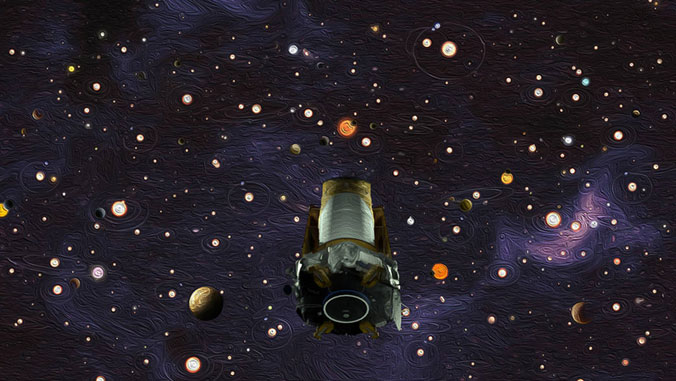
From centuries of studying the planets within our solar system, astronomers have wondered how planets form and evolve to become the ones we observe today. A team of astronomers led by University of Hawaiʻi at Mānoa Institute for Astronomy (IfA) graduate student Travis Berger found that an intriguing class of Neptune-sized planets shrink over billions of years. The study was published in the Astronomical Journal.
One of the most surprising findings of the past decade was the discovery of a new branch in the planetary “family tree,” separating slightly larger than Earth (super-Earths) from those somewhat smaller than Neptune (sub-Neptunes). However, it is unclear how these different-sized planets formed, as observations are only a single snapshot out of a billions of years long lifetime for each individual planetary system.
Astronomers cannot watch planets evolve in real time, so they analyze populations of planets to infer how they form and evolve. Using observations from the NASA Kepler and the ESA Gaia missions, Berger and his team have uncovered another piece of the planet formation and evolution puzzle: as planets are bombarded with intense light from their host stars, they gradually lose their atmospheres over billions of years.
“The loss of planet atmospheres on billion year timescales shows that these planets lose mass, even at old age,” said Berger. “One of our main discoveries is that planet sizes shrink on longer timescales than previously thought.”
NASA Kepler, ESA Gaia missions
NASA’s Kepler mission hunted for planets by focusing at one patch of the sky near the constellation Cygnus for roughly four years, detecting small, regular brightness dips from hundreds of thousands of stars within our Milky Way Galaxy. The size of a dip corresponds to the relative size of the planet compared to its host star. Therefore, to determine the actual size of a planet, it is first necessary to measure the size of the star.
The ESA Gaia mission provided an essential ingredient to measuring the sizes of Kepler planet-hosting stars: parallax. Human eyes use parallax to measure distances to objects, giving us depth perception. Similarly, astronomers use parallax for astronomical-scale depth perception to measure the distances to stars, which in turn assists in measuring the sizes of stars. Distance information is needed to distinguish between a closer small star and a distant, larger star. Combining size and stellar colors also allows astronomers to determine the relative ages of stars.
The UH team used the Gaia constraints on star sizes to revise estimates of planet sizes, and combined it with stellar color data to determine the ages of the planet-hosting stars. They then compared the effects of stellar age on over 2,600 planets detected by Kepler. Some planets, especially those that receive more than 150 times the light that Earth receives from the Sun, lose their atmospheres over a billion years, as they are inundated with heat and light from the host star.
“While astronomers have long predicted that planets should shrink in size as they age, we did not know whether this can occur over timescales of billions of years. We do now,” said Berger. “The fact that we see planet sizes change on billion-year timescales suggests that there is an evolutionary pathway, where highly-illuminated sub-Neptune-sized planets transition to becoming super-Earth-sized planets.”

